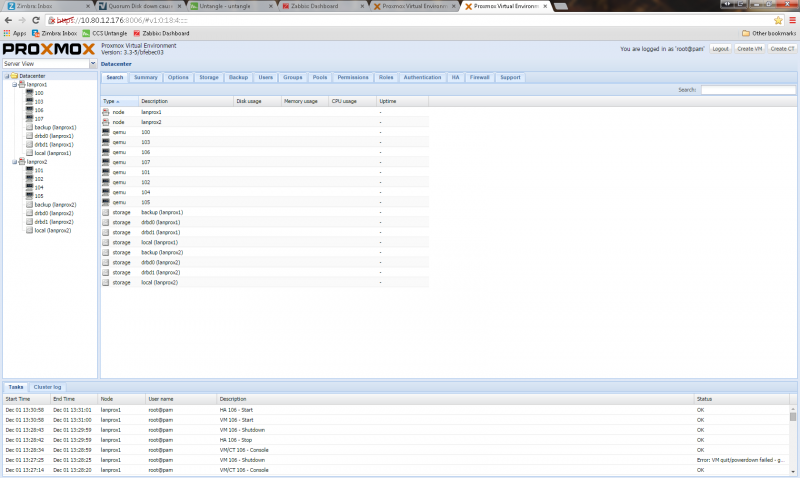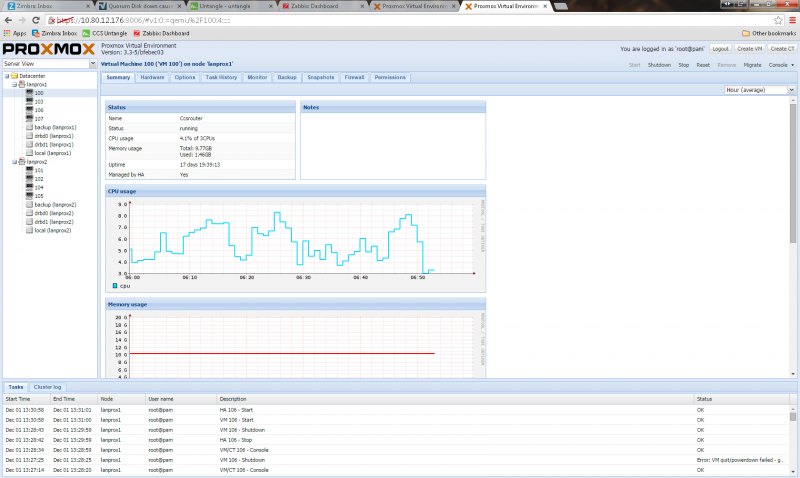I have found that in all my clusters 2.x, 3.x. That when the quorum disk goes down for an extended period of time, the proxmox GUI is in a strange state. The little monitor icon next to each VM is black and only has the VMID and not the description next to it. If I get on any of the clusters and look at clustat everything is AOK. All the VM's are running and everything is good. If I click on one of the VM's in the GUI, it does show them as a "Status" of "running", I can open a console and everything is 100% other than the VM's lacking a description and the little monitor is black. I also noticed that the gui reports both nodes as "red". Clustat reports the cluster as quorate and everything seems ok. Once I bring the quorum disk back online, every comes back to life in the GUI. This is happening across all 10-15 inhouse clusters. I haven't had a chance to test some of the ones out in the field.
Last edited:



